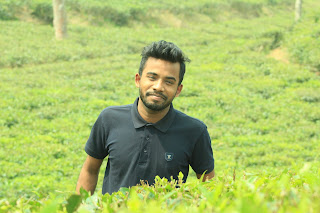Tea production Sylhet in Bangladesh
History Sylhet
Historically, Bengal was the terminus of the Tea Horse Road connecting the subcontinent with China's early tea-growing regions in Yunnan. Atisa is regarded as one of the earliest Bengali drinkers of tea.[5]
Black tea cultivation was introduced in Bengal during the British Empire.[6] European traders established the first subcontinental tea gardensin the port city of Chittagong in 1890, when plantations were set up beside the Chittagong Club using Chinese tea plants from the Calcutta Botanical Garden.[1][5] The first home-grown tea was made and tasted near the Karnaphuli River in Chittagong in 1843.[1][5] Commercial cultivation of tea began in the Mulnicherra Estate in Sylhet in 1857.[1] The Surma River Valley in the Sylhet region emerged as the centre of tea cultivation in Eastern Bengal. Plantations also flourished in Lower Tippera (modern Comilla) and Panchagarh which in North Bengal.Panchagarh is the only third tea zone in Bangladesh and most demanded teas cultivated here.
Tea was a major export of British Bengal. The Assam Bengal Railway served as a lifeline for the industry, transporting tea from growers in the Surma and Brahmaputra Valleys to exporters in the Port of Chittagong.[7][8]
The Chittagong Tea Auction was established in 1949 by British and Australian traders. British companies such as James Finlay and Duncan Brothers once dominated the industry.[9]The Ispahani family also became a highly prominent player in the industry.[10]
Industry
Tea is the second largest export oriented cash crop of Bangladesh, following jute. The industry accounts for 1% of national GDP.[11] Tea-producing districts include Maulvi Bazar, Habiganj, Sylhet, Chittagong, Panchagarh, Brahmanbaria, Rangamati[12]
Once a major world exporter, Bangladesh is now a net importer of tea.[13] The rise of the Bangladeshi middle class has increasingly driven the industry to focus on a lucrative domestic market. The sector is today dominated by Bangladeshi conglomerates, including M. M. Ispahani Limited, Kazi & Kazi, the Transcom Group, James Finlay Bangladesh, the Orion Group, the Abul Khair Group and Duncan Brothers Bangladesh Limited.
In 2012, Bangladesh recorded its highest production of tea, at 63.85 million kilograms.[14] The country has over 56,846 hectares of land under tea cultivation, up from 28,734 hectares in 1947.[1][2] The government has begun to promote small-scale tea growers, particularly in the Chittagong Hill Tracts.
The price of Bangladesh tea is determined at the public auction in Chittagong. In March 2015, the international price of Bangladesh tea was US$2.40.















মন্তব্যসমূহ